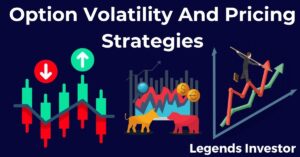I’m often asked about options trading—what it is, how it works, and why it’s become such a vital part of the investment landscape. In its simplest form, options are a type of derivative that grants the holder the right, but not the obligation, to buy or sell an underlying asset at a predetermined price on or before a specific date. It’s a contract, really, between a buyer and seller.
What makes options trading appealing is its flexibility and capacity for strategic financial maneuvering. Unlike simply owning stocks, where your profit or loss is tied to the rise and fall of share prices, options enable you to hedge against risk, speculate on future market movements, and generate income from your investments under a variety of market conditions.
Their versatility has opened up financial markets to individuals in ways that were once accessible only to professional traders or financial institutions. With the advent of online trading platforms, I’ve seen more and more everyday investors dabbling in the world of options, looking to refine their investment strategy or to diversify their portfolio.
The Building Blocks of Options Trading
To truly grasp options trading, it’s crucial to understand its core components, much like learning the essential parts that make up a complex machine. At its heart, options trading revolves around the rights, but not the obligation, to buy or sell an underlying asset. These rights are encapsulated in two primary forms: calls and puts.
A call option grants you the right to purchase an underlying asset, like a stock, at a designated price, known as the ‘strike price,’ before the option expires. In contrast, a put option gives you the right to sell the asset at the strike price before the option’s expiration date.
The ‘strike price’ is a fixed price at which the asset can be bought or sold under the option contract. The ‘expiration date’ is the deadline by which the option must be exercised or it becomes worthless. Then there’s the ‘premium,’ which is the price paid for the option itself – think of it as the entry ticket to the potential transaction on the underlying asset.
Options trading happens within the options market, a landscape where these contracts are bought and sold. This market functions through organized exchanges or over-the-counter, where standardization of contract terms ensures a smoother operation and availability of market information for everyone involved.
With these critical elements in place, options traders can start exploring the wide range of strategies available to them, some for limiting risk, others for speculating on future market movements. It’s this flexibility and variety that make options trading so appealing to traders of all levels.
The Wide World of Options Strategies: A Guide for Beginners
When I first explored the realm of options trading, the variety of strategies available was both exciting and a bit daunting. Options strategies are like tools in a toolkit
– each can serve a very specific purpose, depending on what you’re trying to achieve.
Let’s start with a basic, low-risk strategy known as the covered call. If you own stock and want to make some extra money from it, you can sell call options against those shares. Think of it as renting out your stocks: you’re offering someone else the right to buy them at a certain price within a certain timeframe. If the stock doesn’t reach that price by the expiration date, you keep the premium charged for the option.
Another fundamental strategy is the protective put. This is akin to buying insurance for the stocks you own. By purchasing put options, you secure the right to sell your stocks at a predetermined price, which can be a financial lifesaver if the stock price takes a nosedive.
For those with a taste for something a bit more speculative, there’s the straddle and strangle strategies. Both share a common goal: to capitalize on market volatility. A straddle involves buying a call and a put at the same strike price, betting that the stock will move sharply in either direction. Meanwhile, a strangle uses options with different strike prices to achieve a similar outcome, but typically at a lower upfront cost.
As with any financial decision, each of these strategies comes with its own set of risks and benefits. Through covered calls, you might miss out on additional profits if the stock price skyrockets past the strike price. Protective puts come with the downside of extra costs, whereas straddles and strangles may struggle to profit if the stock price remains too stable. Understanding these strategies deeply is crucial before putting your hard-earned money on the line.
Understanding Options Contracts and Terms
An options contract is an agreement that gives you the right, but not the obligation, to buy or sell an underlying asset at a predetermined price within a set time frame. That alone sets it apart from the obligation-centric nature of futures contracts.
When you’re getting into options trading, there’s a bit of a learning curve with the terminology. ‘In the money’ means your option can be exercised profitably, while ‘out of the money’ signals the opposite. ‘At the money’ indicates the asset price and strike price are the same.
Another pair of terms you’ll encounter are ‘American’ and ‘European’ options. American options can be exercised at any point up until expiration, giving you more flexibility. On the contrast, European options may only be exercised on the expiration date itself.
Options also differ from stocks because they’re derivatives. In plain language, their price is tied to the value of another asset. This interconnection means options can serve both as investment opportunities and as a way to hedge against price movements in other assets you might own.
Keep in mind, the whole idea with options isn’t necessarily about ending up with the asset. It’s more about leveraging the contract’s terms to potentially profit from price movements in the market.
As you start to feel more comfortable with these concepts, you’ll find your options trading conversations going smoother and your understanding deepening – a critical step before considering the potential risks and rewards that come next in this journey.
Assessing Risks and Returns in Options Trading
When I discuss options trading with new investors, I stress that evaluating both the risks and the potential returns is CRUCIAL before diving in. Unlike buying stocks outright, options trading can lead to complex risk profiles that need careful consideration.
One key aspect of risk management in options trading is understanding that options can expire worthless. If the market doesn’t move in your favor by expiration, your investment might evaporate entirely. But, this risk is counterbalanced by the fact that the potential loss is often limited to the premium paid for the option. It’s a rule I live by: never invest more than you can afford to lose.
When it comes to returns, options can be quite lucrative due to their leverage. You’re controlling a large amount of stock for a relatively small upfront cost. However, this leverage is a double-edged sword; it can magnify both gains and losses.
I always urge traders to keep a watchful eye on leverage. A disciplined approach is ensuring you’re not overexposed in a trade. Leverage can turn a small market move into a significant win or an equally substantial loss. So, balance enthusiasm with caution.
The concept of asymmetric risk-reward is another side of options trading that draws in traders. With strategies like buying out-of-the-money options, you invest a small amount with the possibility of reaping high returns if a substantial market move occurs. However, such strategies also come with higher odds of the option expiring worthless.
As I transition into talking about the mindset needed for successful options trading, remember that understanding risks and setting up strategies to minimize them will not only protect your portfolio but can also calm the nerves. It’s about playing the long game, keeping emotions in check, and sticking to your trading plan.
Psychology and Discipline: The Trader’s Mindset
I’ve observed that often, the difference between successful and unsuccessful options traders lies not just in their knowledge and experience, but in their psychological makeup and discipline. Trading, especially with instruments like options, can be as much about managing emotions as it is about managing investments.
Understanding one’s own psychological response to gains and losses is crucial. The exhilaration of a profitable trade can be seductive; it can lead to overconfidence and rash decisions. Conversely, the disappointment from a losing trade might trigger fear, causing one to shy away from solid opportunities.
My advice? Develop a trading discipline that’s rooted in a well-thought-out strategy. This should include clear criteria for entering and exiting trades, risk management rules, and the ability to stick to those rules without letting emotions dictate your actions.
One key discipline is setting realistic profit targets and loss limits for each trade. I follow this rule religiously. If a trade hits a predetermined profit point, I take my earnings. Once a loss reaches a certain threshold, I exit to minimize damage. It’s straightforward, but it works.
Learning from losses is mandatory in the trading world. No one wins every time, and options trading accentuates this truth. Assessing why a loss occurred, without emotional bias, can inform future strategy and improve performance.
Remember, just as a professional athlete reviews their performance and continually hones their skills, so too must you as an options trader. Continuous improvement, driven by objective analysis of your trading behavior, is the cornerstone of long-term success.
Now, as we think about operating within this framework of mental fortitude and tactical discipline, let’s move forward. I’ll share a deeper exploration of advanced options trading strategies, providing the tools you’ll need to apply that mindset effectively.
Diving Deeper: Advanced Options Trading Strategies
By now, you grasp the essentials of options trading. But if you plan to make significant strides, understanding advanced strategies is critical. These tactics help manage risk and enhance profitability under various market conditions.
Spread strategies are a cornerstone in advanced trading. They involve buying and selling multiple options contracts simultaneousy. The goal is to capitalize on differences in contract prices. Bull spreads and bear spreads can be executed with calls or puts, depending on your market sentiment.
Another technique is using collars. A collar involves holding underlying stock while simultaneously buying a protective put and selling a call. This strategy is designed to limit downside risk in the stock position without spending too much on premiums.
The iron condor is a more complex strategy. It’s a combination of two spread strategies – a call spread and a put spread – with the same expiration date. Traders use this to capture small gains in a stable or sideways market.
Delta-neutral trading is aimed at hedging risk by creating a portfolio that is not sensitive to small price movements in the underlying asset. It typically involves buying and selling options in a way that the delta – which measures an option’s sensitivity to price changes – is close to zero.
Finally, ‘time decay’ strategies exploit the Theta, which is the rate at which an option’s value declines over time. Selling options to collect premium income can be profitable if the market moves sideways or the underlying asset stays stable.
Each strategy demands a clear understanding of the market and the ability to make precise adjustments as market conditions change. Now, let’s pivot to the technological realm – the tools that can sharpen your trading efficiency and effectiveness.
Technology and Tools for the Modern Options Trader
I recognize how technology has revolutionized trading, profoundly affecting how we manage options. Traders need robust tools to stay ahead, so I’ll walk you through vital technology and platforms that can bolster your trading strategies.
First on my list is charting software. Visual representations of market conditions are crucial for spotting trends. We’ll explore how real-time data feeds and historical data analysis support solid trading decisions.
Next, let’s look at trading platforms. It’s where you’ll spend a lot of time executing trades, so the user interface and available features can be pivotal. I’ll share insights about some of the top platforms and what distinguishes them.
We’ll also touch on the simulation software. Practicing trades in a risk-free environment allows you to sharpen your skills without the fear of losing capital. I advocate for its use, especially for newcomers.
In addition, mobile apps have made trading accessible from anywhere. Their push notifications keep you informed about market shifts that could affect your options trades.
Algorithmic and AI trading tools are also on the rise. They help identify patterns and execute trades at speeds unmatchable by humans. However, reliance on these tools should be balanced with a sound understanding of market fundamentals.
Lastly, I’ll highlight the importance of keeping abreast with financial news services. Timely information can make or break your trading strategies, and having reliable news sources at your fingertips is non-negotiable.
In the next and final section, I will bring everything together. After understanding the significance of technology and tools, I’ll provide actionable advice that empowers you to chart a successful course in options trading.
Concluding Advice: Building Your Path in Options Trading
I’ve laid out what options trading involves, its various strategies, and the tools you can use to enhance your trading experience. As you take stock of this information, remember that continuously educating yourself is CRUCIAL to success. Options trading can be complex, but with commitment, you can master it.
Start with small, cautious moves while you learn the ropes. Paper trading, or simulated trading environments, provide a risk-free way to practice. Observing the market and your theoretical investments can offer valuable insights without financial loss.
Connect with experienced traders or join a community. These relationships can provide support, knowledge, and even mentorship. Moreover, they are excellent sources for strategies, tips, and avoiding common pitfalls.
Stay updated on financial news and market trends. Information is power in the world of finance, and timely information can be the difference between an opportunity seized and missed.
Use the tools at your disposal wisely. While technology offers new avenues for market analysis and predictions, it is by no means a guaranteed path to success. Your judgment and due diligence should remain at the forefront of any decision-making process.
Finally, approach options trading with discipline, patience, and resilience. The market will test you, but staying level-headed and adhering to a well-thought-out trading plan will aid you in navigating through the ups and downs.



